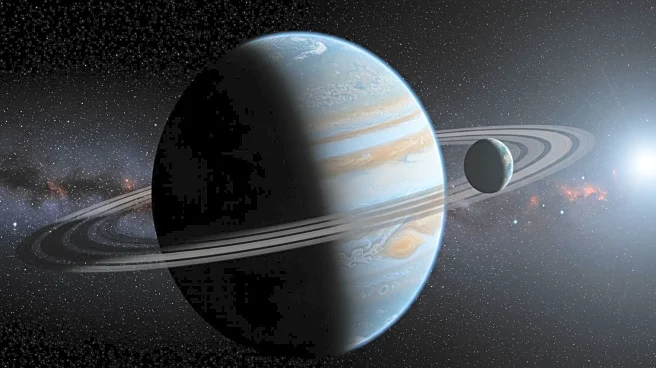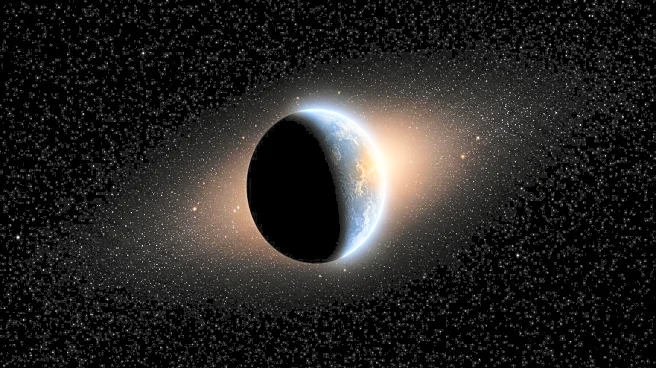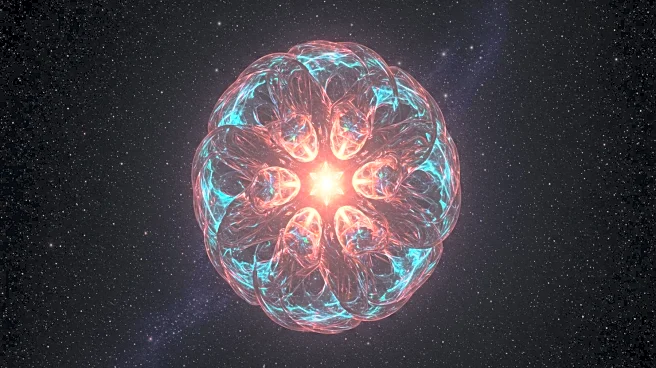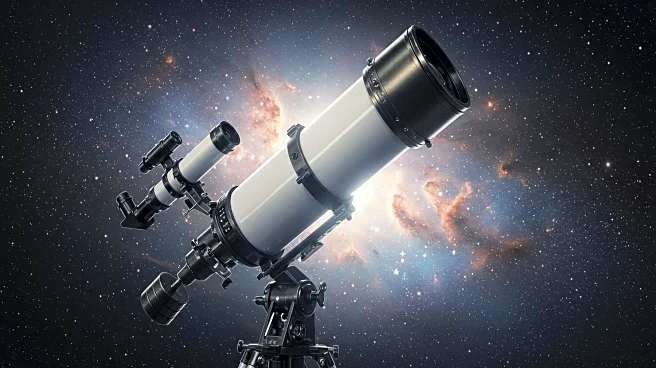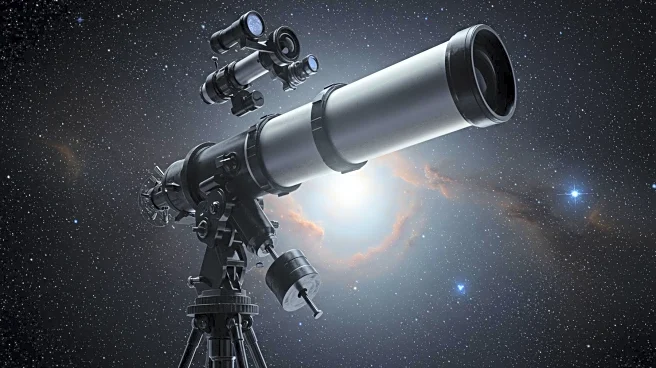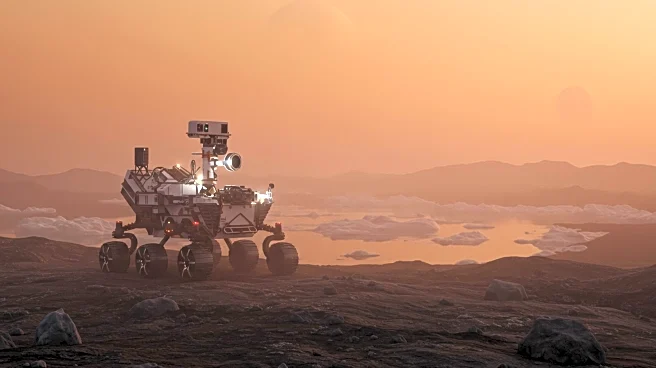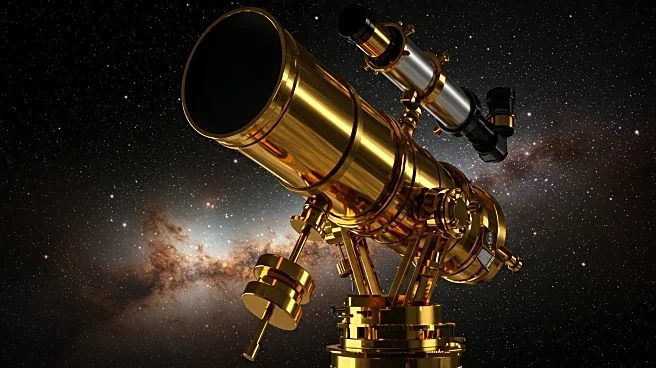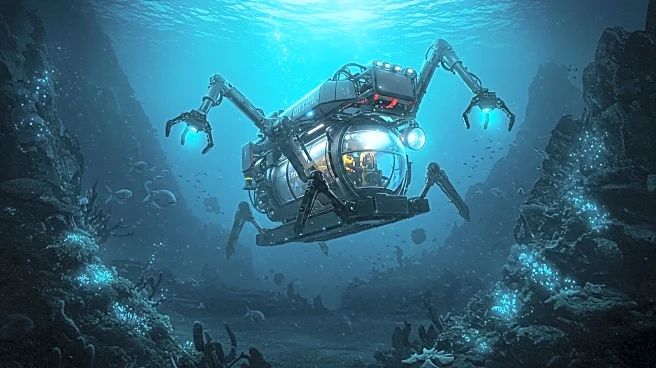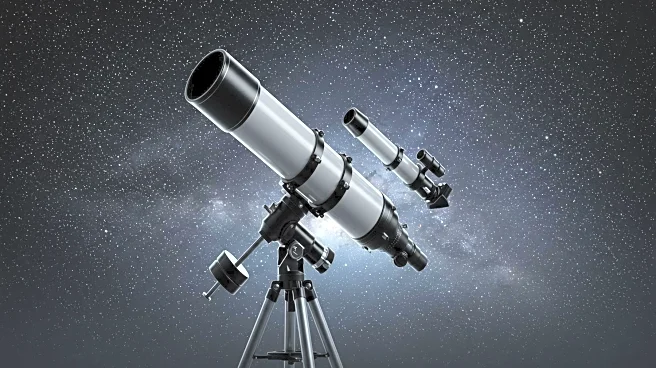What's Happening?
A potential gas giant, named S1, has been identified orbiting Alpha Centauri A, one of the closest stars to Earth. This discovery was made using the James Webb Space Telescope (JWST), which initially spotted the planet in August 2024. However, subsequent attempts to observe the planet were unsuccessful, leading researchers to label it a 'disappearing planet.' The gas giant is believed to orbit its star at a distance twice that between Earth and the Sun, placing it within the habitable zone. Speculation has arisen that S1 could have a moon capable of supporting life, akin to Pandora from the 'Avatar' films. Despite the excitement, there is no current evidence of such a moon or its ability to support life. Researchers anticipate that S1 will become visible again in 2026 and 2027, allowing further study to confirm its existence.
Why It's Important?
The discovery of S1 is significant as it could potentially expand our understanding of habitable zones and the conditions necessary for life beyond Earth. If confirmed, S1 would be the closest known planet in a habitable zone around a Sun-like star, sparking interest in the possibility of extraterrestrial life. The potential for a habitable moon around S1 adds to the intrigue, as moons around gas giants are common in our solar system and could host life-supporting environments. This discovery could influence future space exploration missions and the search for life beyond Earth, highlighting the importance of continued observation and study of nearby star systems.
What's Next?
Researchers plan to continue monitoring S1, with expectations that it will become visible again in 2026 and 2027. This will provide an opportunity to confirm its existence and study its characteristics further. The potential for a habitable moon will also be a focus of future research, as scientists aim to understand the conditions that could support life. The findings could lead to increased interest in the Alpha Centauri system and potential missions to explore its planets and moons.
Beyond the Headlines
The discovery of S1 and its potential moon raises questions about the formation and evolution of planetary systems. It challenges existing models and theories about habitable zones and the conditions necessary for life. The possibility of a real-life 'Pandora' could inspire new cultural and scientific narratives, influencing both science fiction and scientific research. Ethical considerations may arise regarding the exploration and potential colonization of extraterrestrial environments.
